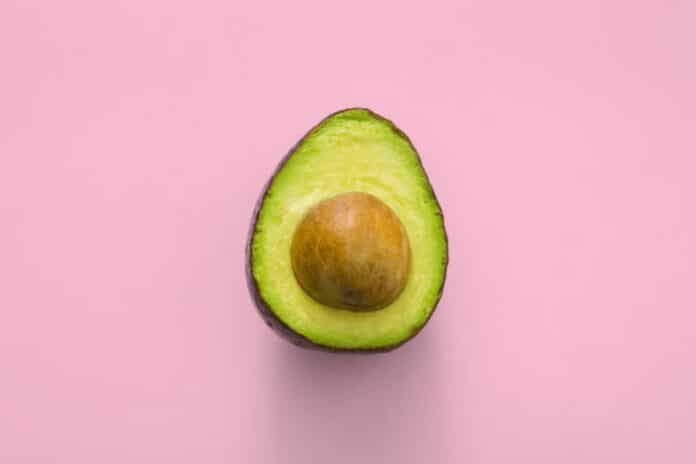Eating a balanced diet is essential for maintaining good health and well-being. By focusing on whole, nutrient-dense foods, you can significantly improve your energy levels, immune function, and overall physical and mental health. In this comprehensive guide, we’ll explore 20 of the healthiest foods, packed with vitamins, minerals, and antioxidants, that should be part of your daily diet.
| Main Topic | Subtopics |
|---|---|
| Introduction | The importance of eating nutritious foods |
| 1. Spinach | Nutritional profile, benefits, how to eat it |
| 2. Blueberries | Antioxidants, heart health, skin benefits |
| 3. Salmon | Omega-3 content, brain health, inflammation |
| 4. Avocado | Healthy fats, weight management, skin care |
| 5. Broccoli | Cancer-fighting properties, immune support |
| 6. Almonds | Vitamin E, brain health, how to use them |
| 7. Sweet Potatoes | Vitamin A, digestion, recipes |
| 8. Quinoa | Complete protein source, gluten-free, fiber |
| 9. Greek Yogurt | Probiotics, gut health, protein content |
| 10. Garlic | Immunity, heart health, anti-inflammatory |
| 11. Kale | Nutrients, antioxidant benefits, recipes |
| 12. Apples | Fiber content, heart benefits, hydration |
| 13. Eggs | Protein, choline for brain, recipes |
| 14. Dark Chocolate | Antioxidants, heart health, serving size |
| 15. Chia Seeds | Fiber, omega-3s, easy ways to eat them |
| 16. Bell Peppers | Vitamin C, skin health, recipes |
| 17. Green Tea | Antioxidants, metabolism boost, preparation |
| 18. Lentils | Protein, heart health, recipes |
| 19. Turmeric | Curcumin benefits, anti-inflammatory, recipes |
| 20. Watermelon | Hydration, vitamins, ways to enjoy it |
| Conclusion | Summary and encouragement to eat diverse foods |
Introduction : 20 Healthy Foods for a Healthy Lifestyle: The Complete Guide
A nutritious diet plays a critical role in achieving and maintaining a healthy lifestyle. Nutrient-rich foods provide essential vitamins, minerals, and antioxidants that support vital bodily functions, including immune health, metabolism, and mental well-being. In this article, we’ll take a look at 20 healthy foods that deliver a powerhouse of benefits.
1. Introduction
Spinach is a green leafy vegetable loaded with nutrients and low in calories, making it a staple in healthy eating.
- Nutritional Profile: High in iron, calcium, vitamins A, C, and K, and folate.
- Health Benefits: Spinach improves bone health, aids in muscle function, and supports vision due to its high vitamin A content. Its high levels of antioxidants, such as lutein and zeaxanthin, support eye health and can reduce the risk of macular degeneration.
- How to Enjoy: Add fresh spinach to smoothies, salads, or sautés.
2. Blueberries
Blueberries are not only delicious but also one of the most potent antioxidant-rich fruits.
- Antioxidant Power: They contain anthocyanins, which help protect against oxidative stress and reduce the risk of chronic diseases.
- Benefits for Heart and Skin Health: Blueberries help improve heart health by lowering bad cholesterol and supporting blood vessel health. They also boost skin health and help reduce signs of aging.
- Ways to Eat: Add blueberries to yogurt, oatmeal, or a fruit salad.
3. Salmon
Salmon is a fatty fish packed with essential omega-3 fatty acids, which support heart and brain health.
- Nutritional Profile: Rich in omega-3 fatty acids, protein, and vitamin D.
- Health Benefits: Omega-3s in salmon help reduce inflammation, improve cardiovascular health, and support cognitive function.
- Preparation Ideas: Grill or bake salmon for a delicious meal. Pair it with vegetables for a balanced dish.
4. Avocado
Avocados are a unique fruit, loaded with healthy fats and fiber.
- Nutritional Benefits: Contains monounsaturated fats, potassium, and vitamin E.
- Health Benefits: The healthy fats in avocados support heart health, and their high fiber content aids digestion and helps with weight management.
- Usage Tips: Spread avocado on toast, add to smoothies, or include in salads.
5. Broccoli
Broccoli is a cruciferous vegetable with powerful cancer-fighting properties and immune-boosting nutrients.
- Nutritional Profile: High in fiber, vitamins C and K, and folate.
- Health Benefits: Broccoli contains sulforaphane, a compound that has been shown to reduce cancer risk. It also strengthens the immune system.
- How to Prepare: Roast, steam, or add to stir-fries.
6. Almonds
Almonds are a versatile nut loaded with nutrients that boost brain and heart health.
- Nutritional Value: Packed with vitamin E, magnesium, and protein.
- Health Benefits: Almonds support brain health, reduce the risk of heart disease, and aid in weight management due to their high fiber content.
- Ways to Enjoy: Snack on a handful of almonds or add them to oatmeal, yogurt, or salads.
7. Sweet Potatoes
Sweet potatoes are nutrient-rich and naturally sweet, making them a versatile and healthy carbohydrate option.
- Nutritional Highlights: High in vitamin A, fiber, and antioxidants.
- Health Benefits: Their high vitamin A content promotes eye health, while fiber aids digestion and supports a healthy gut.
- Cooking Ideas: Bake, mash, or roast sweet potatoes for a satisfying meal.
8. Quinoa
Quinoa is a gluten-free whole grain that’s also a complete protein, making it a valuable addition to a balanced diet.
- Nutritional Content: High in protein, fiber, magnesium, and B vitamins.
- Health Benefits: Quinoa supports heart health, aids in digestion, and is a good choice for those with gluten sensitivity.
- How to Use: Substitute quinoa for rice, or add it to salads and soups.
9. Greek Yogurt
Greek yogurt is a high-protein dairy product that supports gut health thanks to its probiotic content.
- Nutritional Value: Contains protein, calcium, and probiotics.
- Health Benefits: Greek yogurt promotes digestive health and can support bone health due to its high calcium levels.
- Serving Suggestions: Top with fresh fruits, honey, or nuts for a nutrient-packed snack.
10. Garlic
Garlic is not only a flavorful addition to meals but also offers impressive health benefits.
- Nutritional Profile: Contains vitamins C and B6, manganese, and sulfur compounds.
- Health Benefits: Known to boost immune function, garlic also supports heart health by lowering blood pressure and cholesterol.
- Usage Tips: Add minced garlic to sautés, soups, or roasted vegetables.
11. Kale
Kale is a nutrient-dense leafy green with a variety of health benefits.
- Nutritional Content: High in fiber, antioxidants, calcium, and vitamins A, C, and K.
- Health Benefits: Kale is known for its cancer-fighting properties and supports bone health.
- How to Eat: Add kale to salads, smoothies, or bake it into chips.
12. Apples
Apples are a convenient and fiber-rich fruit that supports heart health.
- Nutritional Profile: High in fiber, vitamin C, and various antioxidants.
- Health Benefits: Apples promote heart health, support digestive health, and hydrate the body.
- Ways to Enjoy: Eat raw, add to salads, or bake with cinnamon for a healthy treat.
13. Eggs
Eggs are an affordable and versatile source of high-quality protein.
- Nutritional Benefits: Rich in protein, choline, and vitamins B6 and B12.
- Health Benefits: Eggs support brain health due to their high choline content and provide a complete protein source.
- Serving Ideas: Scramble, boil, or poach eggs for a quick, healthy meal.
14. Dark Chocolate
Dark chocolate with a high cocoa content is a rich source of antioxidants.
- Nutritional Profile: Contains iron, magnesium, and flavonoids.
- Health Benefits: Dark chocolate supports heart health, reduces inflammation, and provides mood-boosting benefits.
- Consumption Tip: Limit serving size to around 1 ounce to avoid excess sugar intake.
15. Chia Seeds
Chia seeds are tiny but packed with fiber and omega-3 fatty acids.
- Nutritional Highlights: High in fiber, protein, and omega-3 fatty acids.
- Health Benefits: Chia seeds support digestive health, improve heart health, and keep you fuller for longer.
- How to Eat: Add chia seeds to smoothies, yogurt, or overnight oats.
16. Bell Peppers
Bell peppers are colorful, nutrient-rich vegetables that add flavor and health benefits to meals.
- Nutritional Value: High in vitamin C, vitamin A, and antioxidants.
- Health Benefits: Bell peppers boost immune health, improve eye health, and support skin health.
- Serving Ideas: Slice into salads, stir-fries, or stuff them with grains and protein.
17. Green Tea
Green tea is a natural source of antioxidants that boost metabolism and support heart health.
- Nutritional Profile: Contains catechins, caffeine, and antioxidants.
- Health Benefits: Green tea enhances brain function, aids in weight loss, and reduces the risk of cardiovascular disease.
- Preparation Tips: Brew with hot water and avoid adding sugar for maximum benefits.
18. Lentils
Lentils are an affordable legume loaded with protein and fiber, making them ideal for vegetarians.
- Nutritional Highlights: High in protein, fiber, iron, and folate.
- Health Benefits: Lentils support heart health, stabilize blood sugar, and aid in digestion.
- How to Use: Add to soups, stews, or salads for a protein boost.
19. Turmeric
Turmeric is a spice with powerful anti-inflammatory properties due to the presence of curcumin.
- Nutritional Content: Contains curcumin, iron, and manganese.
- Health Benefits: Turmeric supports joint health, reduces inflammation, and boosts immune health.
- Usage Tips: Add to curries, soups, or mix with warm milk for a soothing drink.
20. Watermelon
Watermelon is a hydrating fruit that provides essential vitamins and minerals, perfect for hot weather.
- Nutritional Profile: High in vitamins A and C, and antioxidants like lycopene.
- Health Benefits: Watermelon keeps you hydrated, supports heart health, and promotes skin health.
- Ways to Enjoy: Eat fresh, add to fruit salads, or blend into smoothies.
Conclusion
Incorporating these 20 Healthy Foods into your daily diet can support a variety of health goals, from improved digestion and immunity to heart health and cognitive function. A balanced diet that includes fruits, vegetables, lean proteins, and whole grains is key to long-term wellness. Experiment with different recipes and ways to prepare these foods to find what works best for your lifestyle.
20 Healthy Foods

